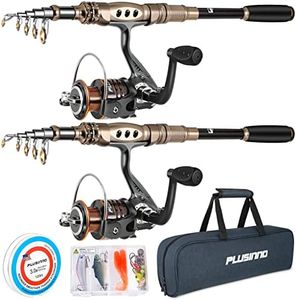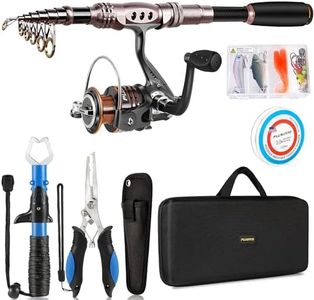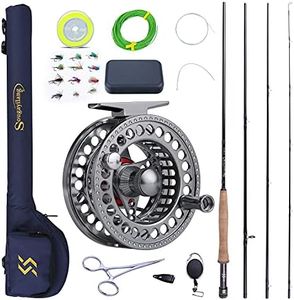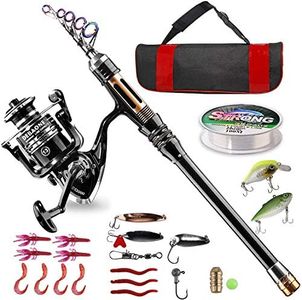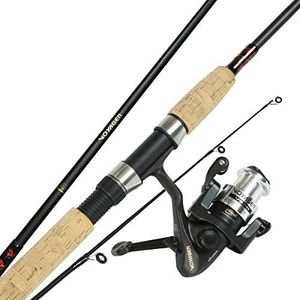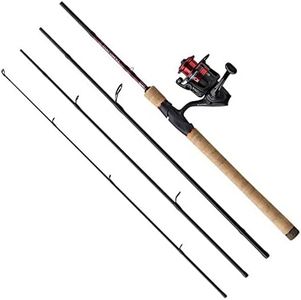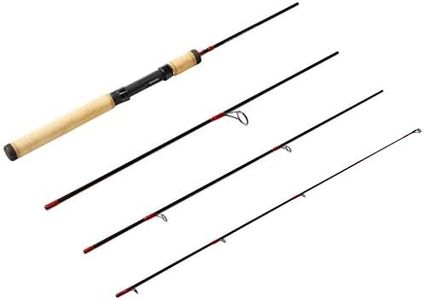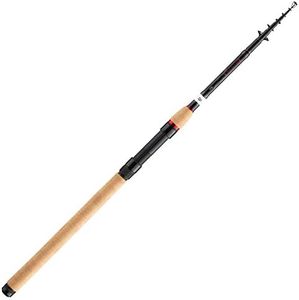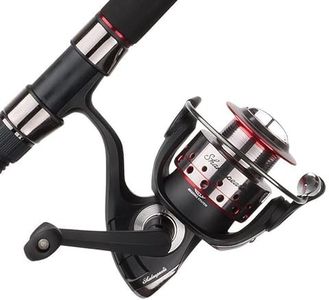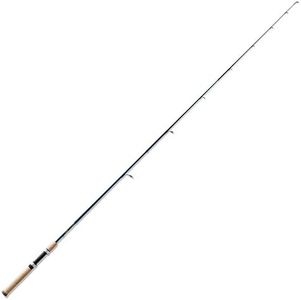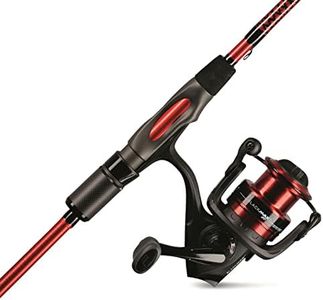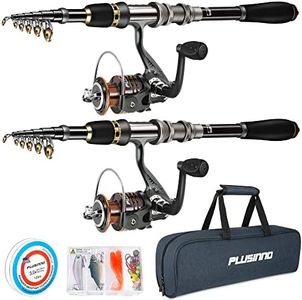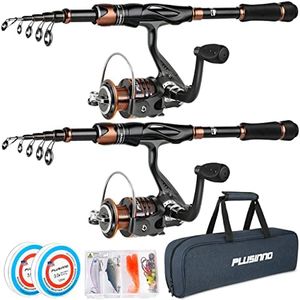We Use CookiesWe use cookies to enhance the security, performance,
functionality and for analytical and promotional activities. By continuing to browse this site you
are agreeing to our privacy policy
10 Best Fishing Poles
From leading brands and best sellers available on the web.Buying Guide for the Best Fishing Poles
Choosing the right fishing pole involves thinking about the type of fishing you want to do, where you’ll be fishing, and your own comfort and skill level. The ideal pole helps you cast easily, control your line, and handle the kind of fish you’re after. By understanding the key features that influence performance, you can find a fishing pole suited perfectly for your individual style and needs.Rod LengthRod length refers to how long the fishing pole is from tip to handle. This is important because it affects casting distance and the amount of control you have. Short rods (under 6 feet) offer more control and are ideal for fishing in tight spaces or around heavy cover. Medium rods (6 to 7 feet) are versatile and suit most beginners or all-purpose fishing. Longer rods (over 7 feet) allow longer casts and are good for open water or surf fishing. Generally, if you fish in small, crowded spots, shorter rods work best. For open areas where you need to cast far, consider a longer rod.
Rod PowerRod power is about how much force is needed to bend the pole. It’s commonly described as light, medium, or heavy. Light power rods are sensitive and bend easily, perfect for small fish. Medium power rods balance sensitivity and strength, making them versatile for a range of fish sizes. Heavy power rods are stiff and suited for large, strong fish. Think about the type of fish you’re after; choose lighter power for smaller species and heavier power for bigger catches.
Rod ActionRod action means where and how much the pole bends when you put pressure on the tip. Fast action rods bend mostly near the tip and are good for quick hook sets and sensitive bites. Moderate action rods bend more through the middle, giving a blend of sensitivity and flexibility, suitable for various fishing situations. Slow action rods bend throughout the entire length, making them ideal for casting light lures and fish that need a gentle approach. Consider fast action if you prefer quick, sharp responses, and slower actions if you like smooth casting or work with live bait.
MaterialFishing poles are typically made from graphite, fiberglass, or a combination of both (composite). Graphite rods are light and sensitive, allowing you to feel even the smallest nibbles, but can be more fragile. Fiberglass rods are tougher and more flexible, making them great for beginners and situations where durability matters more than sensitivity. Composite rods blend both qualities. Choose material based on what’s more important for you: sensitivity and lightweight (graphite), durability and flexibility (fiberglass), or a mix (composite).
Handle TypeHandles can be made from cork, foam, or a combination. Cork provides a comfortable and warm grip, is lightweight, and feels nice in hand but may wear faster. Foam handles are durable and resistant to wet conditions, offering consistent grip but less sensitivity. Longer handles let you use both hands for powerful casts, while shorter handles are easier for single-handed control in tight spots. Pick the handle material and length that feel most comfortable for you during long fishing sessions.
Number of PiecesFishing poles come as one-piece or multi-piece (usually two or more) rods. One-piece rods tend to be stronger and more sensitive, favored for their performance, but can be hard to transport. Multi-piece rods break down for easier travel and storage, though they may lose a bit of sensitivity and strength at the joints. If you travel frequently or need to fit your gear in a small space, multi-piece rods make sense. If you fish mostly close to home or want the best performance, a one-piece rod is worth considering.
